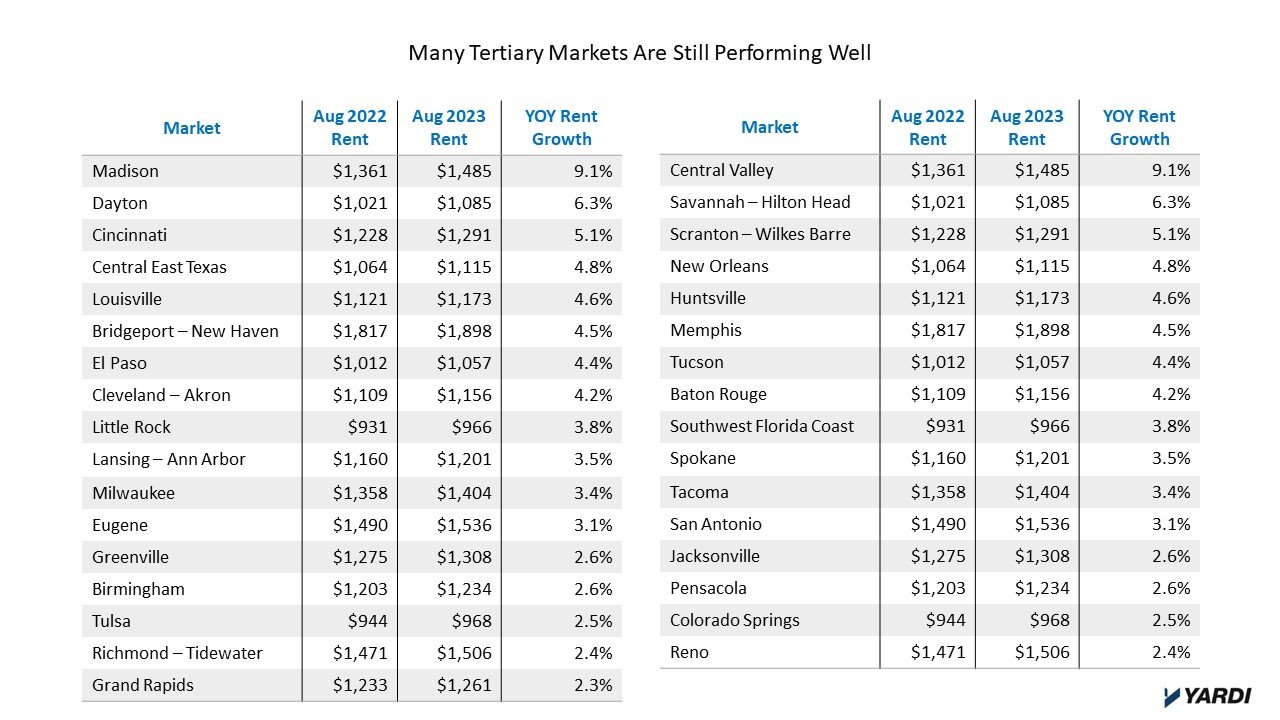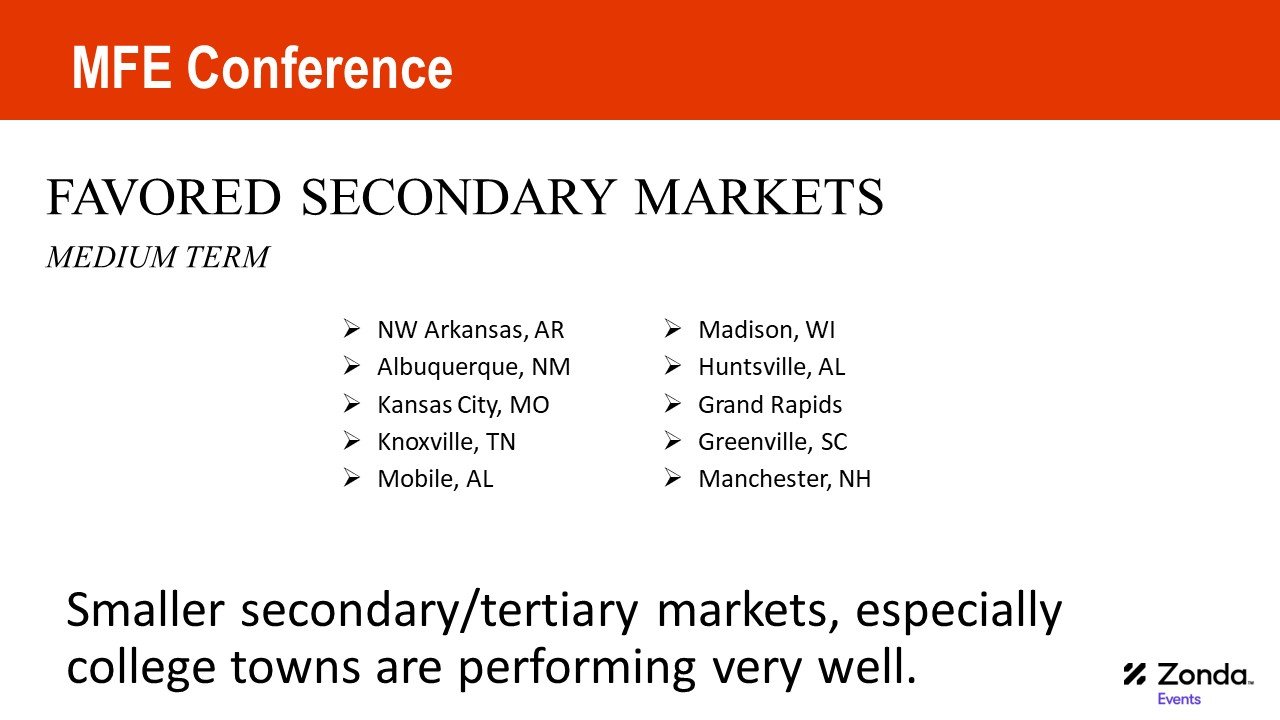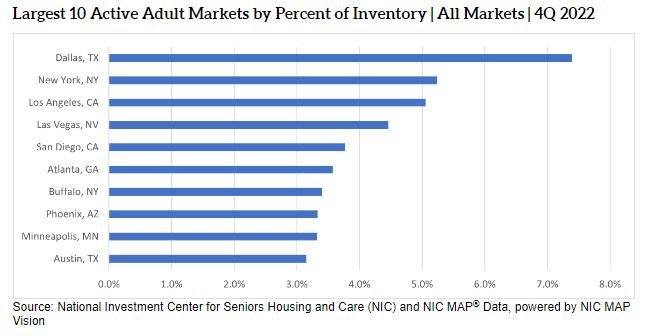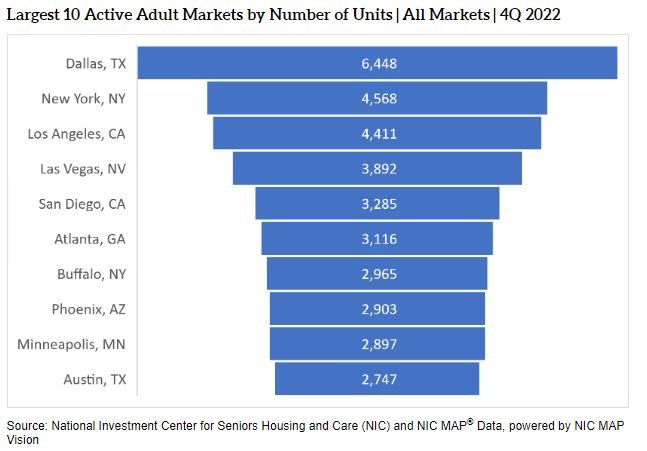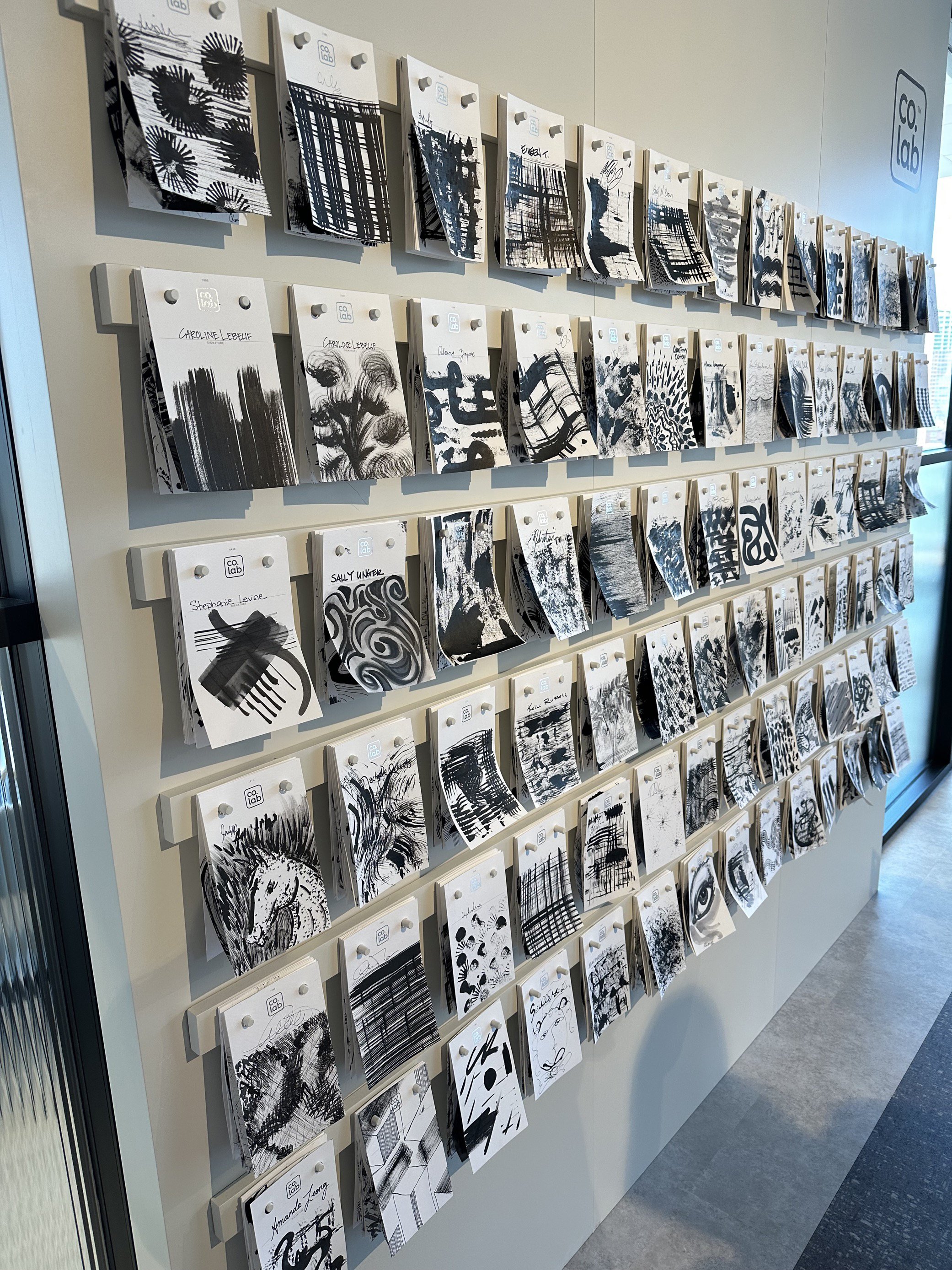On the Conference Junket – Highlights and Insights from FDG
Throughout the summer as we sensed the slowing of the industry, we set out to invest in our team and our understanding of the current and future state commercial real estate including multifamily and senior living development as well as the new products available. We believe this knowledge will continue to make us better designers, maximizing your investment in our services. Below we have outlined the most impactful takeaways from Interface, Bisnow, and other conferences we have attended.
Multifamily
Payback of student loans starting in October will highly impact spending habits. Average student loan debt will equate to $200-$300/month for 43.6 million people.
Slower job growth and lack of labor force will also affect the ability for construction growth.
Interest rates at 7.5% are a 21-year high.
Typically, rental apartment homes account for approximately 20% of housing, but due to current home costs and interest rates it has risen to 30-35% of the homes scenarios.
Vacancies have gone up and rent growth has flattened, and there is about to be an influx of too much supply but that will be a short-term problem.
Of current construction- office conversions are only about 2% but higher in Dallas. It is very expensive to convert an office building into residential units. 1% of those are hotel conversions.
B & C Class communities are doing better with rent growth vs A+ luxury communities.
Active Adult
There are 88k units, 625 properties, 135 markets, 43 states
At $1900 rent average, there is a 10 to 30% rent premium over multifamily but 30-50% less than IL rates
Dallas metro has over 7% of Active Adult inventory, NY & LA have 5%, Austin has 3%
70% Of residents come from a <10 mile radius
60% Residents are coming from a single-family home they own – Active adult residents are looking for a curated, carefree lifestyle without the maintenance of home ownership
Hyper focused on unit size to balance square footage, offer two-bedrooms while keeping rent cost down
Communities should have a lifestyle program to deliver activities like fitness and yoga without a fulltime activity director
Clubhouses around 10,000 SF
5-8 Units leased up per month in communities less than 300 units. Communities with 300+ units really slow down on lease up towards the back end of the cycle, but once they are full they stay full
1.1 Cars to unit ratio
Pickleball is still a hot amenity while scaling down other amenities like gold simulators
Senior Living
Occupancy rates are stabilizing: at 83.7%, occupancy was 5.9 percentage points above its pandemic-related low of 77.8% recorded in the second quarter of 2021 and was 3.4 percentage points below its pre-pandemic level of 87.1% of the first quarter of 2020
Staff spaces – Senior living communities are having a hard time keeping communities staffed, well designed spaces for staff can make a difference
71% of residents are women
Create space plans that support and promote movement
Provide spaces for entire families when they visit
Residents are happily moving into communities, they are choosing to move into SL
Huge focus on value add opportunities – renovations
More efficient use of space as square footage is shrinking
Still missing the middle market: These seniors are unlikely to qualify for Medicaid but may not have sufficient resources to pay for the housing and care options that they need or want.
Over the next decade, the number of middle-income seniors will almost double—reaching 16M adults ages 75+ by 2033.
Without selling their homes, three-quarters of middle-income seniors (11.5M) have insufficient resources to pay for private assisted living.
As the baby boomers age, the size of the middle-income population will increase, especially among seniors ages 75-84, which will grow by 5M.
Design
Tarkett Insights and Innovation Workshop
Caroline Lebeuf was thrilled to attend Tarkett’s Insights and Innovation Workshop with so many industry experts. Keynote speaker, Ryan Frederick, Founder and CEO of Here was exceptionally inspiring highlighting the importance of space AND place as we age. Here are some takeaways from his presentation.
We tend to spend more time alone as we age
Age in in the right place for each chapter in life – design and designers make a difference
Move from Demographics to Demographics AND Psychographics
Be intentional about Placemaking
Promote belonging over just fitting in
Mannington Crafted for Living
Mickey Gilliland attended the Mannington Crafted for Living workshop and shared a few excerpts from a presentation by Scanalytics called Good Design is Good Medicine. They are tracking data with technology integrated into flooring materials to measure key health performance indicators. Items like declining gate speed, navigation, and weight balance can be tracked as key performance indicators and over time may indicate a decline and eventually a fall. Tracking this data will allow for preventive measures and intervention.

